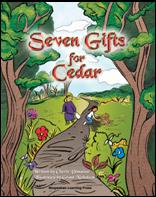Four Directions Teachings is a visually engaging, audio-narration about indigenous knowledge and philosophy. Elders representing five of Canada’s First Nation groups (M’ikmaq, Mohawk, Ojibe, Cree and Blackfoot) explain their culture’s creation stories, traditional ceremonies, prayers, elders and dance.
I learned a number of interesting facts about indigenous culture from this site. For example, indigenous language is made up mostly of verbs because the culture believes that everything is alive and has a spirit. Therefore, there are fewer words to describe inanimate objects. I also learned that as Mohawks count the numbers 1-10, they are recounting the Mohawk creation story. That is because their word for the number one is the the name of the sky woman who first created the sky, the number two is the same word for twins because the sky woman’s daughter gave birth to twins, and so on… What a great way to help indigenous people remember their creation story. These are the kinds of interesting facts that I would have loved to learn in my intermediate or high school years. In my opinion, this web-site is a very engaging teaching tool.

